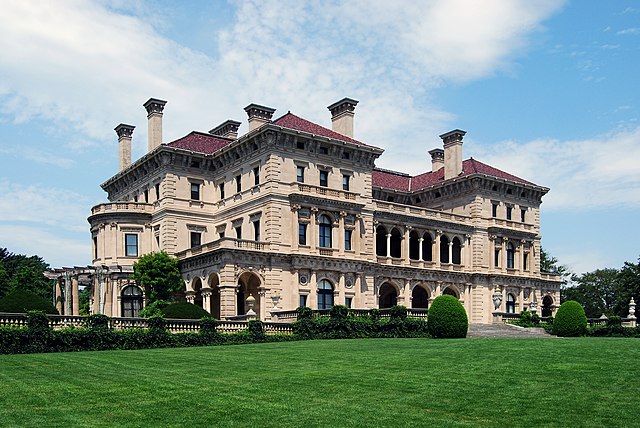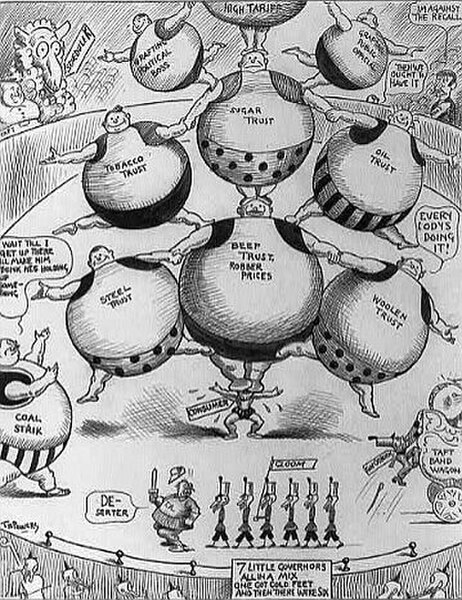In United States history, the Gilded Age is described as the period from about the 1870s to the late 1890s, which occurred between the Reconstruction Era and the Progressive Era. It was named after an 1873 Mark Twain novel by historians in the 1920s who saw this interval of economic expansion as an era of materialistic excesses combined with political corruption.
The Breakers, a Gilded Age mansion in Newport, Rhode Island, built by the wealthy Vanderbilt family of railroad tycoons
First edition cover of The Gilded Age: A Tale of Today (1873), a collaborative novel by Mark Twain and Charles Dudley Warner
The celebration of the completion of the first transcontinental railroad, May 10, 1869
The Toluca Street Oil Field in Los Angeles oil district, 1900
The Progressive Era (1896–1917) was a period in the United States during the early 20th century of widespread social activism and political reform across the country. Progressives sought to address the problems caused by rapid industrialization, urbanization, immigration, and political corruption as well as the enormous concentration of industrial ownership in monopolies. Progressive reformers were alarmed by the spread of slums, poverty, and the exploitation of labor. Multiple overlapping progressive movements fought perceived social, political, and economic ills by advancing democracy, scientific methods, and professionalism; regulating business; protecting the natural environment; and improving working and living conditions of the urban poor.
The Awakening: "Votes for Women" in 1915 Puck magazine
Christmas 1903 cover of McClure's features a muckraking expose of Rockefeller and Standard Oil by Ida Tarbell.
Charlotte Perkins Gilman (pictured) wrote these articles about feminism for the Atlanta Constitution, published on December 10, 1916.
Monopoly brothers—Politically powerful trusts created high prices all carried by hapless little consumer 1912; by Thomas Powers








